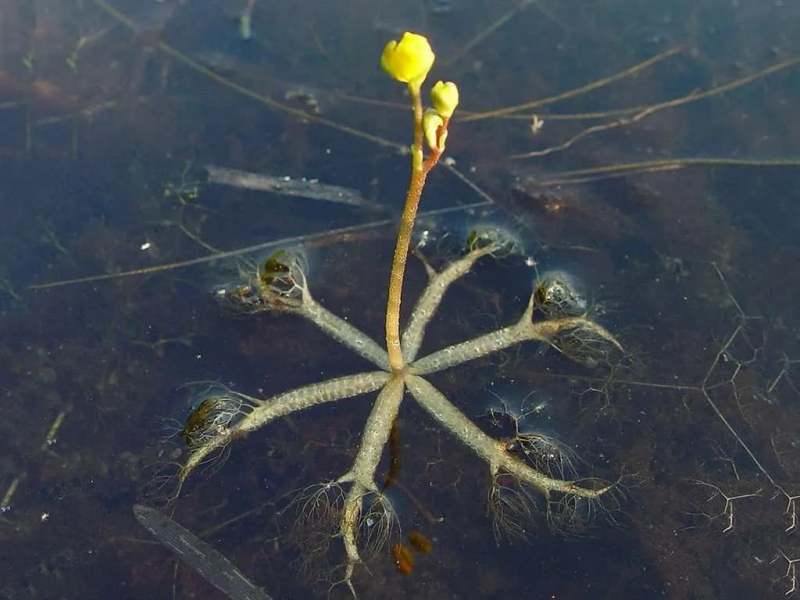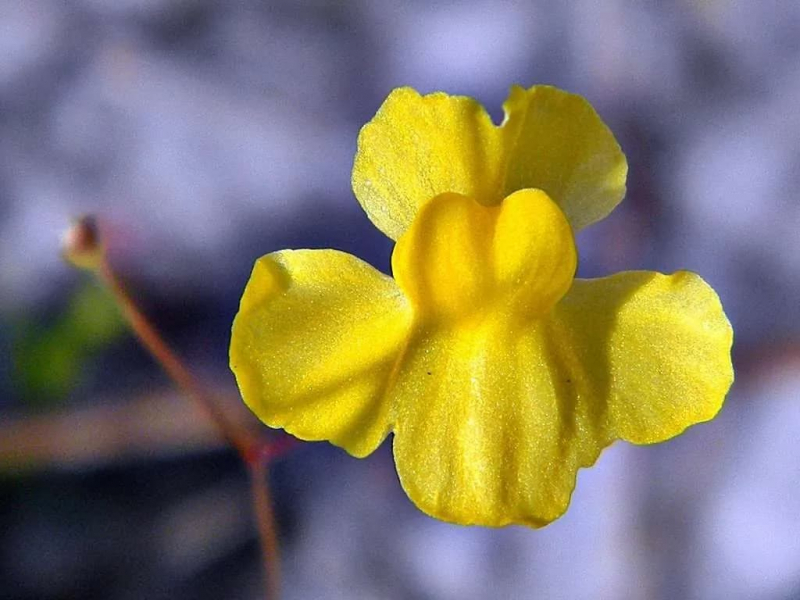Bladderwort

Bladderwort is a carnivorous aquatic plant that belongs to the Lentibulariaceae family. It may expand to a width of 2 mm to 10 cm. With the exception of Antarctica, all continents are home to these tiny blooms. They are most common in flooded environments, lakes, and streams. There are both terrestrial and aquatic bladderwort species. It has a lengthy, horizontally floating stem with simple or finely divided leaves most of the time. It also has no roots. The limb either floats freely on the water's surface or lies flat on the mud.
The plant's dark green, reddish, or brown leaves have bladders. the plant's small, opaque or dark-colored sacs are used to catch and digest tiny water creatures including worms, fly larvae, and insect larvae. They received their name from the bladder-like trap system they used to catch the little prey. The fruit of these tiniest blooms is a sphere-shaped capsule that contains many small seeds. From July to August, flowers bloom.
These tiniest flowers were primarily grown as ornaments for aquariums, pots, and terrariums. The bladderwort's two-lipped, bisexual blooms are placed in racemes at the top of the blooming stem. Two sepals, two stamens, five joined petals, and a superior ovary make up the flowers. In them, self-pollination also occurs. Additionally, seed and stem division are used in its propagation.











